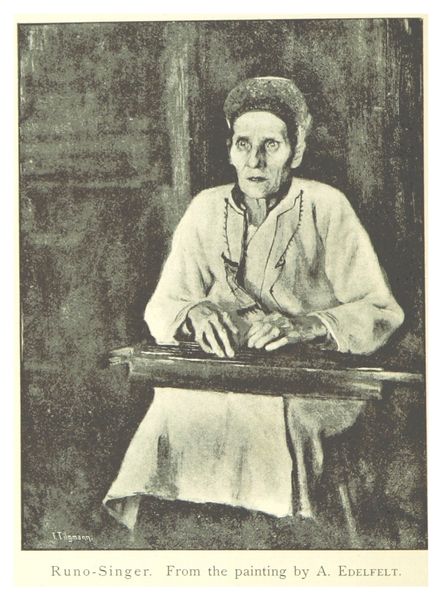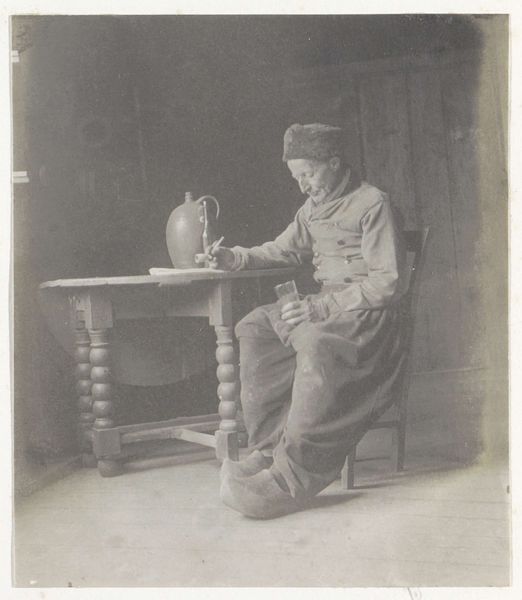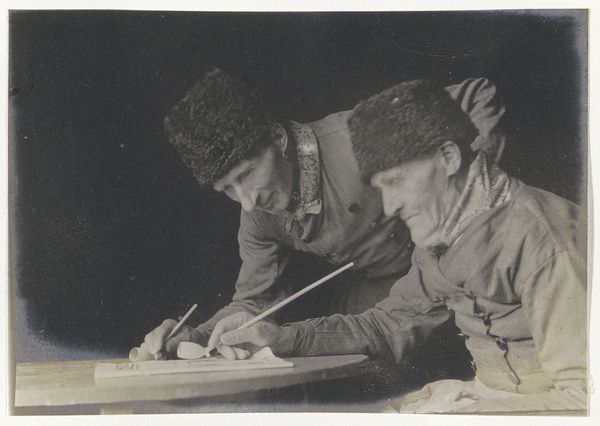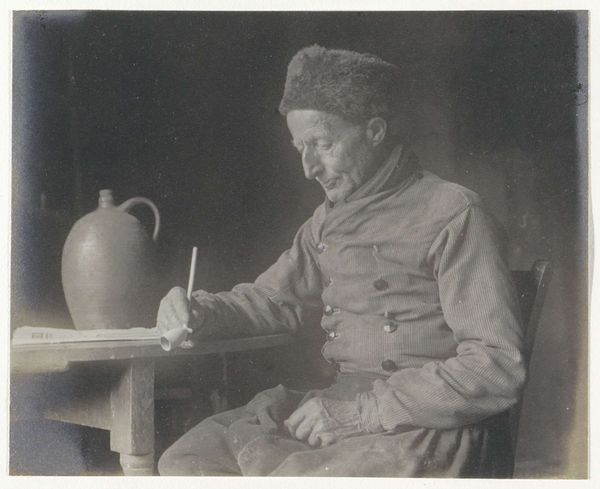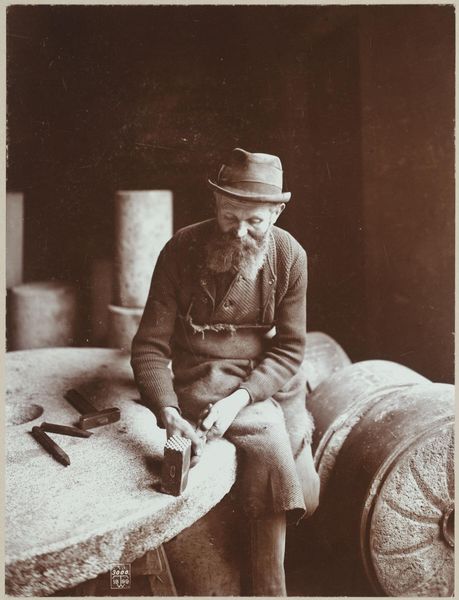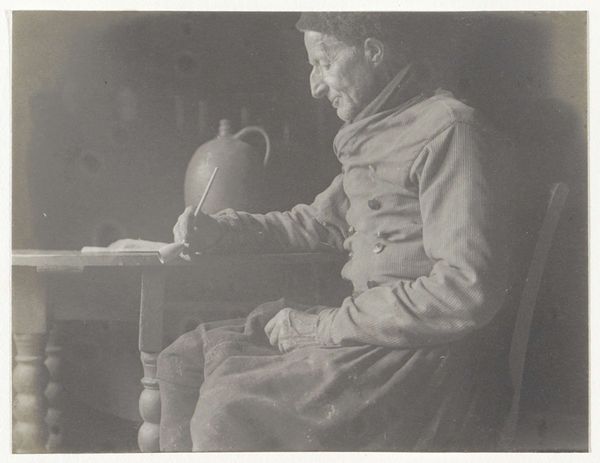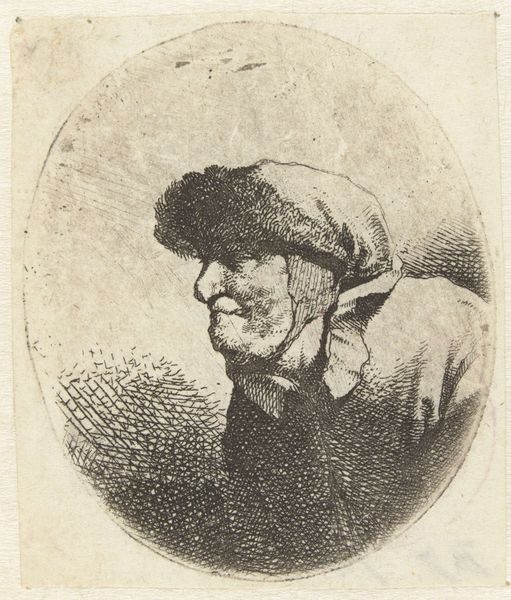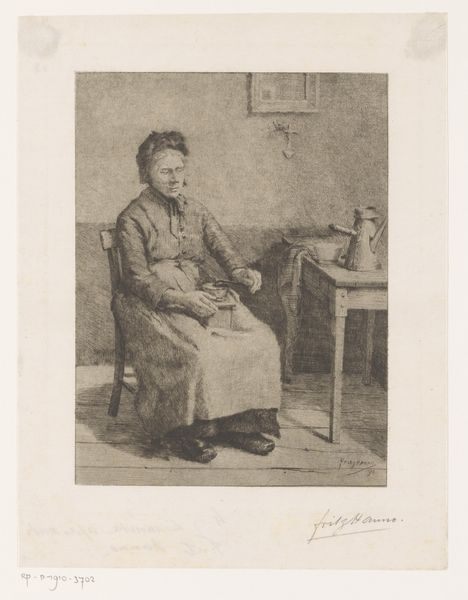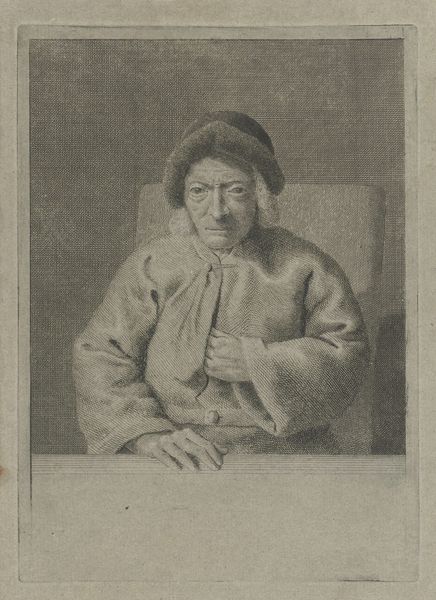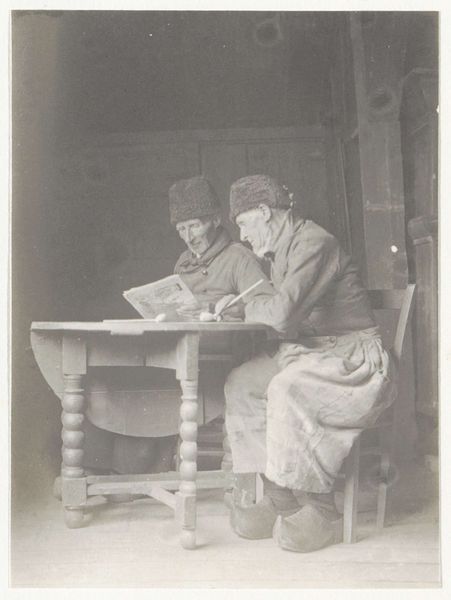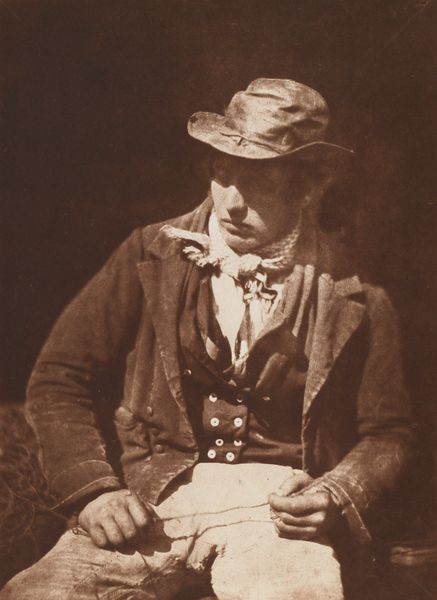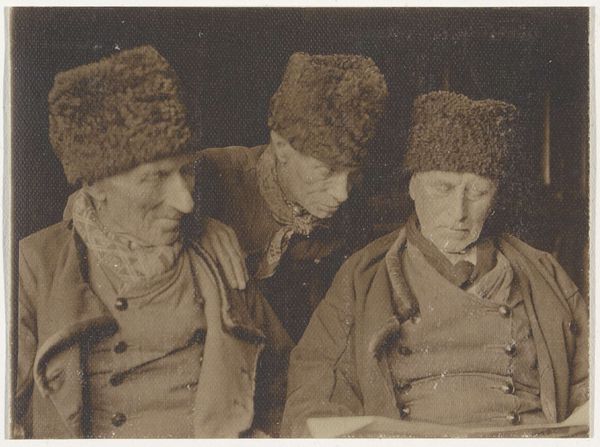
Portret van een zittende man met een muts met pijp in de hand, vermoedelijk in Volendam c. 1900 - 1910
0:00
0:00
#
light pencil work
#
pencil sketch
#
charcoal drawing
#
possibly oil pastel
#
charcoal art
#
pencil drawing
#
underpainting
#
watercolour illustration
#
charcoal
#
watercolor
Dimensions: height 152 mm, width 114 mm
Copyright: Rijks Museum: Open Domain
Curator: Looking at "Portret van een zittende man met een muts met pijp in de hand, vermoedelijk in Volendam"—that translates roughly to "Portrait of a seated man with a cap, pipe in hand, presumably in Volendam"—created around 1900 to 1910, attributed to G. Hidderley. It's rendered in charcoal, possibly with watercolor touches. What springs to mind for you? Editor: The immediate impression is somber and contemplative. The restricted palette adds to the subdued mood, focusing our attention on the man’s downward gaze and the tools in his hands. He seems absorbed. Curator: Indeed. Volendam, a Dutch fishing village, became quite the artist's haven around that time. This image conjures archetypes: the seasoned craftsman, the rootedness of a traditional lifestyle... He’s got the unmistakable Volendam cap. It signals a sense of belonging, perhaps a resistance against the rising tides of modernization? Editor: I wonder about that cap and the pipe; they act as visual shorthand. Consider how this image plays into a narrative carefully cultivated and consumed. The late 19th and early 20th centuries witnessed a burgeoning tourism industry in Volendam. It shaped its artistic identity, turning it into this staged haven. Were artists truthfully capturing the lives of its inhabitants or staging them for a buying audience? Curator: An important question. Think about the weight a simple item can carry—a cap becomes not just clothing, but an icon representing cultural pride. Consider how these regional costumes were subtly romanticized. Artists often accentuated features and outfits to amplify this idealized image. Editor: And think about the materials, the charcoal medium lends a certain earthiness, a roughness that perhaps aims to further authenticate this 'simple life.' But it's artifice, really, skillfully manufactured sentiment. Curator: The use of watercolor introduces nuance, however. That underpainting almost vibrates beneath the darker lines. I believe that technique invites the viewer into his inner world—an intimate, yet manufactured perspective. Editor: Absolutely. Ultimately, "Portret van een zittende man" offers us a space for thinking critically. A study of authenticity. A study about visual constructions. Curator: A journey, for sure, between the objective lens of art and the stories they’re designed to tell, or sell.
Comments
No comments
Be the first to comment and join the conversation on the ultimate creative platform.
